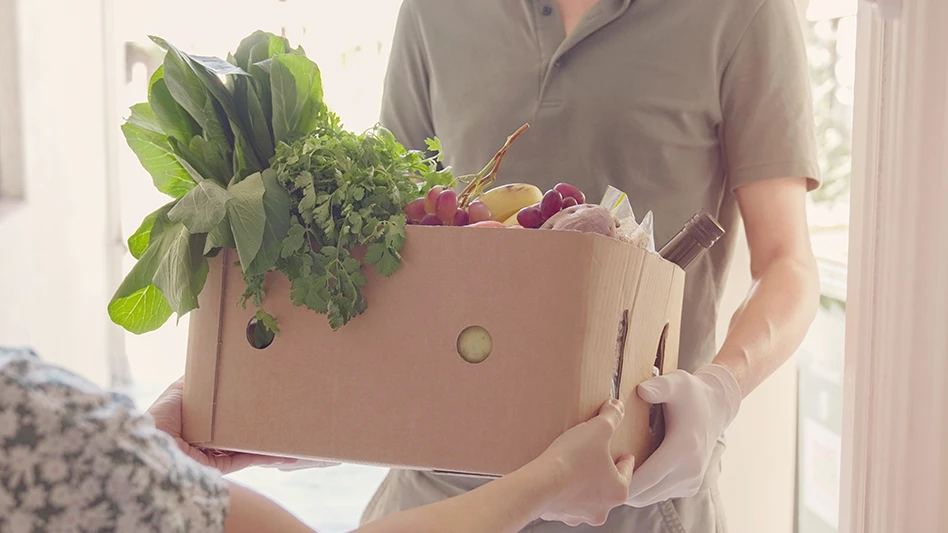
Adobe Stock | SewcreamStudio
Pittsburgh, Pa. — As the annual ReFed conference on food waste kicks off in Baltimore, we’re more aware than ever of the impact of food waste and food insecurity. Yet many stakeholders — from community members to elected officials to philanthropic foundations — are still unclear on one of the solutions to these challenges: food recovery.
The term “food recovery” may evoke images of a church or food pantry picking up surplus from a local grocery store for a distribution event. Food recovery can include such intermittent rescues, but it also extends beyond them, pioneering a comprehensive, systemic approach that tackles the intertwined issues of food insecurity and food waste simultaneously.
Food waste occurs during every step of the food production and transportation process. Consumer-facing businesses, from supermarkets to cafes, contribute most significantly to the waste that occurs before food makes it into our homes.
In the United States, there are more than:
- 26,149 conventional supermarkets
- 4,412 supercenters like Walmart or Target
- 150,174 convenience stores
- 3,507 natural/gourmet stores
When these food retailers find themselves with surplus, that food typically needs to be recovered and distributed quickly — it is approaching its sell-by date, is ripe and ready to eat today and/or requires refrigeration to stay fresh.
This type of food is not readily metabolized by the traditional, hub-and-spoke model of retail food donation, based on regularly scheduled pick-ups from refrigerated trucks, which then bring donations back to food banks to be sorted, inventoried, stored and redistributed through a network of food pantries and emergency food assistance organizations. In fact, this system can itself become the site of food waste when it is forced to receive food that is inappropriate for its model.
To capture a broad enough swath of retail surplus to make a dent in our food waste problem, we need a flexible donation transportation system — one that can efficiently navigate the expansive nature of surplus food, its time-sensitivity and the diverse logistical accommodations needed by donors and nonprofit distribution sites.
A solution field-tested by organizations like Food Rescue Hero combines a flexible donation transportation system with a varied donation distribution network. In this model, a fleet driver or volunteer picks up surplus food from the point of surplus and then directly delivers it to a community access point for potential immediate distribution. This model solves the bottlenecks on both the food donor and the distribution side of the system.
On the donation side, food rescue organizations can coordinate both one-time donations and regular weekly pickups of surplus food by mobilizing volunteer transporters as well as an organizational fleet of trucks. This approach ensures that any size of donation can be picked up, even between highly distributed retailer locations. In this way, food recovery is focusing on the needs of the donor as well as the climate impact of the food.
On the distribution side, this same flexible model translates to a diverse network of partners, including nontraditional distribution sites such as subsidized housing, Head Start programs, WIC offices, veterans organizations and job training centers.
Through this network, food can get to people who need it at the places they already frequent, seven days a week and regardless of quantity — whether the rescue is one tray of deli sandwiches or 10 pallets of cucumbers.
Jennifer England, Food Rescue Hero’s vice president of external affairs, said, “Not only is this robust, flexible system critical in ensuring a grocer’s surplus does not become a nonprofit’s garbage, but it also means greater opportunities for food access in the community. Initiatives like providing subsidized housing residents with groceries — effectively ending hunger at our Pittsburgh partner, Housing Authority of the City of Pittsburgh — exemplify the transformative power of community-focused approaches.”
She added, “Community collaboration and cooperation become vital tools in meeting the dual goals of reducing food waste and ensuring equitable access to nourishment.”
Current organizations using the Food Rescue Hero app include:
- 412 Food Rescue in Pittsburgh, Pa.
- 302 Food Rescue Crew in Delaware
- 530 Food Rescue Coalition in Butte County, Calif.
- Food Finders in Los Angeles, Calif.
- Haven’s Harvest in New Haven, Conn.
- Hunger Network in Cleveland, Ohio
- Kentucky Harvest in Louisville, Ky.
- Lake Erie Food Rescue in Erie, Pa.
- Lakeshore Food Rescue in Holland, Mich.
- Last Mile Food Rescue in Cincinnati, Ohio
- Northern Virginia Food Rescue in Northern Va.
- Philly Food Rescue in Philadelphia, Pa.
- Supply Hive in Des Moines, Iowa
- Table to Table in Bergen, N.J.
- Vancouver Food Runners in Vancouver, Canada
- We Don’t Waste in Denver and Boulder, Colo.
- Food Rescue White Pony Express in Contra Costa, Calif.
Latest from Quality Assurance & Food Safety
- Chef Robotics Introduces Pat-Down Capability for Meal Presentation and Sealing
- USDA Launches Regenerative Pilot Program
- Indoor Ag-Con Adds Food Safety Track to Conference Lineup
- IDFA Recognizes Federal Officials for Support of U.S. Dairy Industry
- Tetra Pak Acquires Bioreactors.net
- Fresh Del Monte Receives Rabobank Leadership Award
- São Paulo Earns Guinness World Record for Largest Municipal Food Security Program
- KPM Analytics Releases Ready-to-Use NIR Calibration Packages





